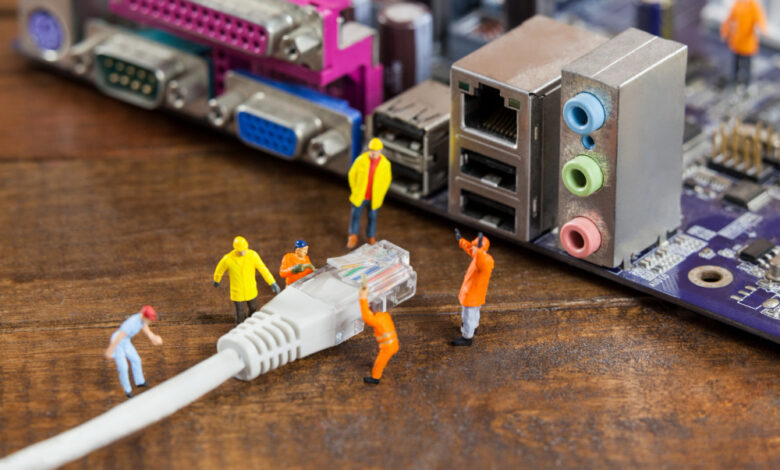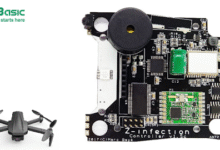Understanding 127.0.0.1:49342: A Guide to Localhost and Port Numbers

In the digital age, networking and communication are foundational to technology’s functionality. Among the many terms that IT professionals and tech enthusiasts encounter, “127.0.0.1:49342” stands out as a common but often misunderstood concept. In this article, we’ll delve into what 127.0.0.1 is, the significance of port numbers, and how they play a crucial role in local networking.
What is 127.0.0.1?
At its core, 127.0.0.1:49342 is the loopback IP address, commonly known as “localhost.” This address is used to establish an IP connection to the same machine or computer you are using. Essentially, when you send data to 127.0.0.1, you’re instructing your computer to send that data to itself. This functionality is critical for several reasons, including testing, development, and troubleshooting.
The Concept of Localhost
The term “127.0.0.1:49342” refers to the local computer or device that is currently being used. It allows users to access network services running on their own devices without the need for an external network connection. When you enter “localhost” in a web browser, you’re connecting to the services running on your computer.
Why Use 127.0.0.1?
The loopback address serves several purposes:
- Testing and Development: Developers often use 127.0.0.1:49342 to test applications and services locally without affecting the production environment. This allows for rapid iteration and debugging.
- Security: By using the loopback address, developers can ensure that their services are only accessible from the local machine, preventing unauthorized access from external sources.
- Network Configuration: Network administrators utilize 127.0.0.1 for configuring and troubleshooting network settings. It helps isolate issues and validate network interfaces.
Understanding Port Numbers
The second part of the address, 49342, is a port number. Ports are logical channels that enable different types of traffic on a computer. Each application or service that communicates over a network uses a specific port number to send and receive data.
What are Port Numbers?
Port numbers range from 0 to 65535 and are divided into three categories:
- Well-Known Ports (0-1023): These ports are reserved for widely used protocols and services, such as HTTP (80), HTTPS (443), and FTP (21).
- Registered Ports (1024-49151): These ports can be registered by software companies for proprietary applications and are less standardized than well-known ports.
- Dynamic/Private Ports (49152-65535): These ports are typically used for temporary connections and are assigned dynamically by the operating system.
The Role of Port 49342
Port 49342 is categorized as a dynamic port, meaning it is likely used for a specific application or service that runs on your local machine. This port number can be dynamically assigned to applications based on the demand and availability.
When you access an application via 127.0.0.1:49342, you are connecting to a service that is listening on that port on your local machine. The service could be anything from a web server to a database or an API. The specific application utilizing this port can vary depending on the software you have running.
Common Uses of 127.0.0.1:49342
1. Web Development
For web developers, 127.0.0.1:49342 might be the address of a local development server running a web application. Tools like XAMPP, WAMP, or MAMP enable developers to run a local server environment where they can test their applications before deploying them to a live server.
2. API Testing
API developers often use localhost to test their APIs locally before making them publicly accessible. Using tools like Postman or curl, developers can send requests to 127.0.0.1:49342 to see how their API responds.
3. Database Management
Database management systems like MySQL or PostgreSQL can also be accessed locally via the loopback address. By using 127.0.0.1 and the appropriate port number (often 3306 for MySQL, but can vary for others), developers can manage databases without the need for external connections.
4. Application Debugging
When debugging applications, developers often run their programs in a controlled environment using the loopback address. This allows them to identify issues without affecting other services running on the machine.

Troubleshooting Issues with 127.0.0.1:49342
While using the loopback address is generally straightforward, users may encounter issues. Here are common problems and their solutions:
1. Connection Refused
If you receive a “connection refused” error when trying to access 127.0.0.1:49342, it usually means that no service is listening on that port. Ensure that the application intended to run on that port is active.
2. Firewall or Security Software
Sometimes, firewall settings or security software may block access to certain ports. Ensure that your firewall allows connections to localhost or specifically to port 49342.
3. Misconfigured Services
If the service you’re trying to access isn’t configured correctly, it might not respond on the expected port. Check the application settings to ensure it is set to listen on the correct port.
The Future of Local Networking
As technology continues to advance, the significance of localhost and loopback addresses remains paramount. Here are a few trends and predictions for the future of local networking:
1. Increased Use of Virtualization
With the rise of virtual machines and containerization technologies like Docker, developers increasingly rely on localhost to create isolated environments for testing and development. This trend is likely to continue as organizations seek efficiency and flexibility in their development processes.
2. Expansion of IoT Applications
As the Internet of Things (IoT) grows, the need for robust local networking will increase. Local devices may communicate with each other over localhost before relaying data to the cloud, improving response times and reducing latency.
3. Enhanced Security Measures
With growing cybersecurity concerns, local networks will play a crucial role in ensuring secure communications. Utilizing localhost can enhance security by limiting exposure to external threats.
Conclusion
Understanding 127.0.0.1:49342 is essential for anyone involved in technology, from developers to network administrators. The loopback address and its associated port numbers serve as critical components in local networking, enabling efficient testing, development, and troubleshooting.
As we continue to innovate in the tech space, the importance of local environments and their configuration will only grow. Whether you are developing a new application, testing an API, or managing a database, mastering the use of localhost will empower you to work more effectively and securely.
By harnessing the power of 127.0.0.1 and its associated ports, you can ensure that your projects run smoothly and that your technical skills remain sharp in an ever-evolving digital landscape.





